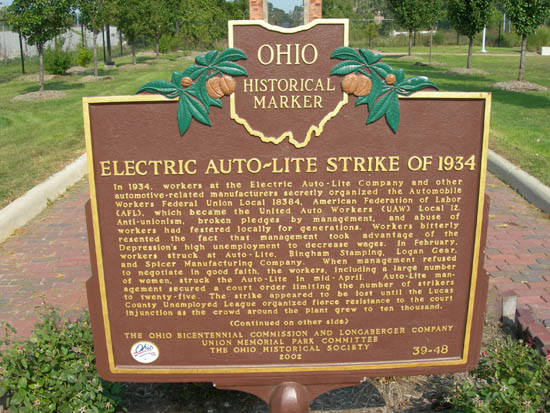

On this day in labor history, the year was 1934.
That was the day striking Toledo Auto-Lite workers ratified an agreement, securing a number of first gains.
Workers won union recognition, wage increases, mechanisms to arbitrate grievances and demands, and the rehiring of all workers.
National Guard troops were withdrawn two days later.
It was truly a breakthrough in industrial organizing. Victory was ensured by a number of factors
Certainly, the six-day running battles that killed two strikers and injured hundreds had a profound impact.
But by the end of May, 85 of the 103 unions affiliated with Toledo’s Central Labor Union had voted in favor of a general strike.
As well, the powerful Edison workers demanded raises and union recognition with the International Brotherhood of Electrical Workers.
Their business agent led the Committee of 23 that sought to organize the general strike in Toledo.
On June 1, 40,000 trade unionists amassed for a rally at Lucas County Courthouse Square, ready to strike.
By then the AFL had already appealed to President Roosevelt to intervene.
Edison workers won big the next day with a 22% raise and union recognition.
And then the tentative agreement was reached between Auto-Lite and UAW local 18364.
Historian Bryan Palmer notes, “These victories wrote finis to any mobilization for a general strike, but they paved the way for ongoing union victories in the automobile industry.
Before the year was out, 19 more auto-parts plants in Toledo would fall to union organizers.
A General Motors plant was rocked with the first successful strike in the history of this corporate giant, the opening blow in what proved to be a long and taxing effort to establish trade-unionism in the open shop bastions of the automobile industry.”
More Episodes
All Episodes>>You may also like
Creat Yourt Podcast In Minutes
- Full-featured podcast site
- Unlimited storage and bandwidth
- Comprehensive podcast stats
- Distribute to Apple Podcasts, Spotify, and more
- Make money with your podcast











